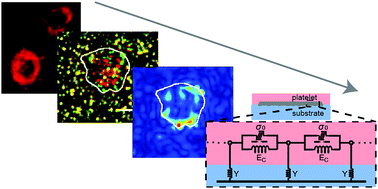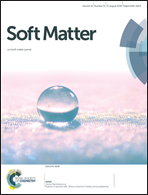Dynamics of force generation by spreading platelets†
Abstract
In order to gain more insight into the role of human platelets for blood clot formation, here we investigate the dynamics of force generation by platelet spreading onto elastic substrates of variable stiffness. Despite their small size, platelets generate high and rapidly varying traction forces on their extracellular environment, which we reconstruct with adapted implementations of Fourier transform traction cytometry. We find that while the final spread area is reached within a few minutes, the build-up of forces typically takes 10–30 minutes. In addition, we identify two distinct behaviors of individual cells, namely oscillating and non-oscillating platelets. An eigenvalue analysis of the platelet dipole tensor reveals a small anisotropy of the exerted force, which is compatible with a random distribution of a few force transmitting centers, in agreement with the observed shapes and traction patterns. We find a correlation between the maximum force level a platelet reaches and its spread area, which we explain by a thin film model for the actively contracting cell. The model reveals a large internal stress of hundreds of kPa. Experimentally we do not find any statistically relevant relation between the force level reached and the substrate stiffness within the stiffness range from 19 to 83 kPa, which might be related to the high platelet activation level used in our study. In addition, our model suggests that due to the uniquely small thickness of platelets, their mechanosensitivity might be limited to a lower stiffness range.



 Please wait while we load your content...
Please wait while we load your content...